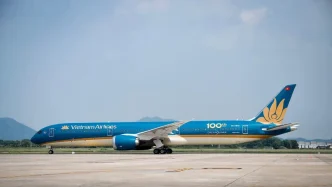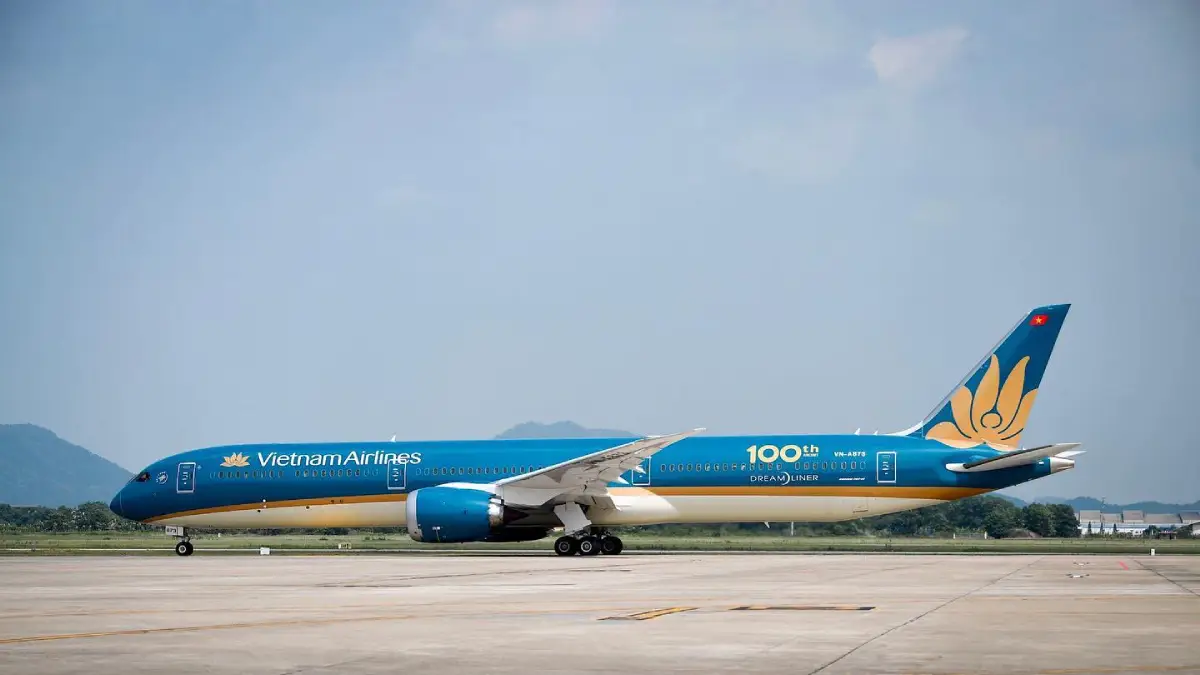A recent ground collision between two Vietnam Airlines aircraft at Noi Bai International Airport in Hanoi has triggered a sweeping response from the Civil Aviation Authority of Vietnam (CAAV), with new directives aimed at bolstering flight safety during the busy summer travel season and amid worsening weather conditions. The incident, which occurred on June 27, 2025, has raised serious questions about operational protocols at one of Southeast Asia’s key aviation hubs, prompting both immediate suspensions and long-term policy reviews.
Details of the Collision
On the morning of June 27, a Boeing 787 bound for Ho Chi Minh City struck the tail of an Airbus 321 awaiting departure to Dien Bien City. The collision took place at the intersection of taxiways S and S3 at Noi Bai International Airport, a critical junction for aircraft movements. Both planes sustained damage, though no injuries were reported among passengers or crew. The CAAV has classified the incident as a Level B event on its five-tier aviation incident scale, indicating a significant safety breach that warrants thorough investigation.
Following the collision, Vietnam Airlines suspended both aircraft from service and grounded the four pilots involved pending the outcome of an inquiry. While the exact cause remains under investigation, early speculation points to potential lapses in communication or adherence to taxiing protocols. The airline has yet to release an official statement on the incident’s specifics, but sources within the industry suggest that human error during taxiing may have played a role, though this remains unconfirmed.
CAAV’s Immediate Response
In the wake of the incident, the CAAV issued an urgent directive to all aviation units across Vietnam, emphasizing the need for heightened safety measures as air traffic surges during the peak summer period. The authority underscored the challenges posed by adverse weather, particularly thunderstorms, which are common in the region during this season. The directive mandates strict compliance with operational procedures, especially during critical phases like taxiing, takeoff, and landing.
Among the key instructions, pilots are required to conduct detailed pre-departure briefings on taxi routes, utilize updated airport charts, and maintain heightened vigilance at busy intersections and narrow taxiways. If any uncertainty arises regarding clearance from obstacles—be it other aircraft, vehicles, or personnel—pilots must stop immediately and seek clarification from air traffic control. Additionally, a “readback-hearback-confirmation” protocol has been reinforced to ensure accurate communication between pilots and controllers, minimizing the risk of misunderstandings.
The CAAV also prohibited non-essential activities during operations, such as taking photos or filming, to maintain focus among crew members. For airlines, the authority called for enhanced flight supervision, regular procedural reviews, and the fostering of a safety-first culture within their organizations.
Air Traffic Control and Airport Infrastructure
Air traffic controllers have not been spared in the CAAV’s push for reform. The directive requires controllers to maintain constant visual surveillance of aircraft movements, leveraging tools like ground surveillance systems, binoculars, and visual markers to monitor positioning and spacing. Any unauthorized or abnormal movements—such as incorrect taxiing or stopping in restricted zones—must be addressed immediately. Controllers are also tasked with providing frequent weather updates to pilots, enabling real-time adjustments to flight plans.
Airport operators, meanwhile, face pressure to improve infrastructure and signage. The CAAV has urged intensified inspections of ground markings, lighting systems, and taxiway indicators to ensure they meet safety standards. At high-traffic airports like Noi Bai, operators are encouraged to adopt advanced surface movement guidance systems to prevent runway incursions and ground collisions, a measure that could prove critical as Vietnam’s aviation sector continues to grow.
Broader Implications for Vietnam’s Aviation Sector
The collision at Noi Bai comes at a time when Vietnam’s aviation industry is experiencing rapid expansion, driven by rising domestic and international travel demand. Noi Bai International Airport, serving as a gateway to the capital and a hub for Vietnam Airlines, handles millions of passengers annually. However, this growth has strained infrastructure and operational systems, raising concerns about whether safety protocols have kept pace with the sector’s development.
Aviation experts note that ground collisions, while rare, often expose systemic issues in communication, training, or infrastructure. “Incidents like this are a wake-up call” said Tran Minh, a former pilot turned aviation consultant based in Hanoi. “They highlight the need for rigorous training and investment in technology to manage the increasing complexity of airport operations.”
The timing of the incident—during the peak summer travel season—adds further urgency to the CAAV’s response. With thousands of tourists and locals traveling across Vietnam and beyond, any disruption or safety concern could have ripple effects on public confidence in the aviation sector. Moreover, the looming threat of unpredictable weather patterns, exacerbated by climate change, poses additional challenges for airlines and regulators alike.
Vietnam Airlines Under Scrutiny
As Vietnam’s flag carrier, Vietnam Airlines has faced scrutiny over its handling of safety protocols in the past, though it maintains a generally strong safety record compared to regional peers. The suspension of the pilots and aircraft involved in the June 27 incident signals a commitment to accountability, but questions remain about the airline’s internal oversight mechanisms. Industry observers are keen to see whether the ongoing investigation will uncover deeper issues in pilot training or operational culture.
The financial implications of the collision are also worth noting. Repairing or replacing damaged aircraft components can be costly, with estimates for tail repairs on an Airbus 321 potentially reaching hundreds of thousands of dollars. For instance, similar repairs have been reported to cost upwards of 10 million Vietnamese Dong (US$400,000) in past incidents, though exact figures for this case remain undisclosed. These expenses, coupled with potential reputational damage, could weigh on Vietnam Airlines as it navigates an already competitive market.
Regional and Global Context
Ground collisions are not unique to Vietnam; they represent a persistent challenge for airports worldwide, particularly in densely trafficked regions like Southeast Asia. In recent years, similar incidents have occurred at major hubs such as Singapore’s Changi Airport and Bangkok’s Suvarnabhumi Airport, often attributed to high traffic volumes or miscommunication. The International Civil Aviation Organization (ICAO) has long advocated for enhanced ground movement systems and standardized safety protocols to mitigate such risks, recommendations that the CAAV appears to be heeding with its latest directives.
For Vietnam, aligning with international best practices is crucial not only for safety but also for maintaining its reputation as a reliable aviation market. The country’s aspirations to become a regional transit hub depend on public and investor confidence in its infrastructure and regulatory framework. Any perceived lapses in safety could hinder these ambitions, especially as competitors like Thailand and Singapore continue to invest heavily in their aviation sectors.
Public Reaction and Future Outlook
Public reaction to the Noi Bai incident has been mixed, with some travelers expressing concern over safety standards while others praise the swift response from authorities. Social media posts on platforms like X reflect a range of sentiments, from frustration over potential delays to calls for greater transparency in the investigation process. “I fly through Noi Bai often, and this makes me nervous” wrote one user. “Hope they fix whatever went wrong.”
As the investigation unfolds, the aviation community in Vietnam and beyond will be watching closely. The CAAV’s directives mark a proactive step, but their effectiveness will depend on implementation and enforcement. For now, the focus remains on ensuring that incidents like the June 27 collision become a catalyst for meaningful reform rather than a recurring headline. With air traffic set to grow and weather challenges intensifying, the stakes for Vietnam’s aviation safety have never been higher.
















